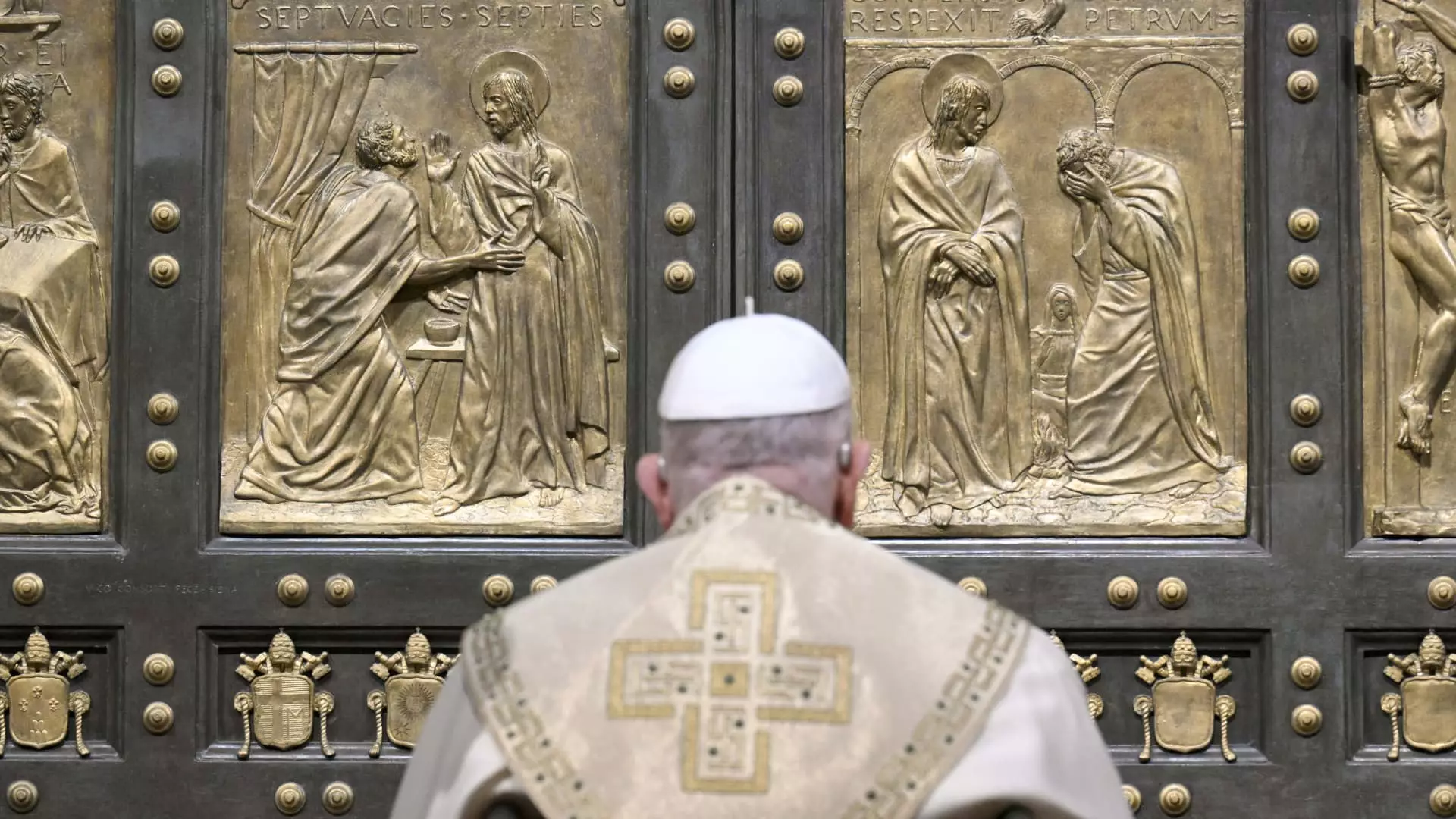As the world’s smallest country both in terms of geographic size and population, Vatican City may seem modest, but this spiritual epicenter will draw an astounding 32 million travelers in 2025 for the Jubilee celebrations. This year-long event represents not just a point in the calendar; it is a profound moment of pilgrimage, reflection, and a rejuvenation of faith for Catholics globally. As Caterina Rigoni, a spokesperson for the Jubilee, describes, “It is a time for masses, processions, and cultural celebrations, with the Vatican standing at the heart of the Catholic experience.”
The Jubilee is steeped in rich tradition, initiated on December 24 with the ceremonial opening of the “Holy Doors” by Pope Francis. This ritual, a practice that can be traced back to at least the 1500s, involves the symbolic opening of four doors that are typically sealed. These doors re-open only during designated Jubilee years, which occur every 25 years. The act of passing through these doors embodies a spiritual cleansing and a reconnection to faith, serving as a magnetic pull for pilgrims who wish to engage deeply with their religious heritage.
In addition to the Holy Doors, the Jubilee creates unique pilgrimage opportunities, most notably the “Seven Churches” pilgrimage that spans 15.5 miles from the Vatican to Rome’s outskirts. This route has rested in the hearts of pilgrims since the 16th century, inviting participants to engage physically and spiritually. In contrast, the newer “Patronesses of Europe and Doctors of the Church” pilgrimage allows visitors to learn about female saints, adding another layer of exploration during the festivities. Special days will highlight various segments of society, such as the armed forces and teenagers, ensuring a diverse tapestry of activities and celebrations throughout the year.
Planning Ahead: What to Expect
Jubilee organizers anticipate high attendance for the multitude of concerts, religious events, and festivities. Rigoni encourages travelers to carefully plan their visit and stay updated through the Jubilee’s official website and app. Travel logistics can swiftly become overwhelming; hence, early planning will maximize visitors’ experiences.
For tourists, the choice of accommodations is critical. Brandon Shaw, a seasoned resident of Rome, recommends the Prati neighborhood. While often overlooked, this area is just hops away from the Vatican and boasts a more authentic Roman experience. Shaw highlights several hotels, including Hotel Dei Mellini and Hotel NH Collection Roma Centro, as ideal places to stay for a relaxing visit infused with local charm. Dining options are plentiful here—Shaw suggests visiting Panificio Bonci for essential Roman pizza, while Il Sorpasso offers fine dining without the overwhelming tourist crowds.
For those seeking to savor Rome while avoiding the Jubilee throngs, even Shaw provides adventures off the beaten path. He suggests exploring the rich history of The Catacombs of Rome, a fascinating network of underground burial sites that date back to early Christianity. Additionally, the Appian Way, an ancient roadway lined with historical landmarks and remnants of the Roman Empire, offers tranquillity away from city life. The Park of the Aqueducts presents an opportunity to witness awe-inspiring remnants of ancient engineering crucial to the Roman Empire’s greatness.
For travelers averse to bustling cities, Kathy McCabe offers enticing alternatives to Rome. She extols the virtues of Modena, a city steeped in culinary heritage and historical allure without overwhelming crowds. She reminisces about her encounters with renowned chef Massimo Bottura and emphasizes that Modena provides a window into Italy’s gentler past—where tourist traps are replaced by quaint streets and authentic experiences. Similarly, Capua and Caserta emerge as hidden gems, with grand architecture and historical significance.
Food enthusiasts should take note: Bologna and Parma are touted as must-visit cities for their gastronomic delights. McCabe fondly describes the culinary treasures that await in these northern cities, marking them as destinations for those who appreciate the art of Italian cooking.
Despite the potential chaos surrounding the Jubilee, McCabe urges future travelers to view Rome as an endless source of exploration. Beyond the primary tourist attractions lies a trove of lesser-known churches, museums, and hidden dining gems. Rome is not merely a city; it is a living testament to art, history, and spirituality. To those contemplating a trip in 2025, remember that even amidst the tide of visitors, the city offers pockets of serenity and experiences uniquely its own.
In sum, Vatican City in 2025 promises an exceptional convergence of faith, culture, and culinary experiences. Whether engaging deeply in the Jubilee’s planned events or choosing a quieter adventure outside its walls, the opportunities for discovery are vast.


Leave a Reply